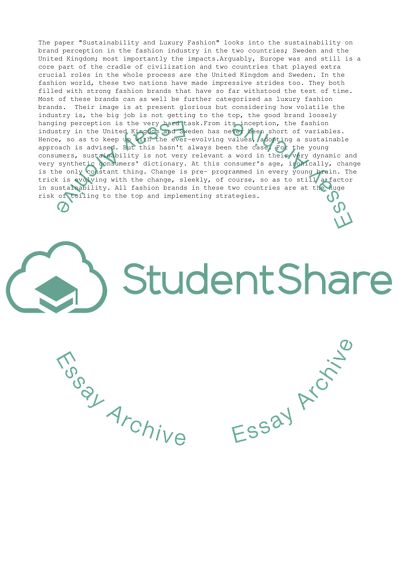Cite this document
(“Sustainability and Luxury Fashion Essay Example | Topics and Well Written Essays - 3250 words”, n.d.)
Sustainability and Luxury Fashion Essay Example | Topics and Well Written Essays - 3250 words. Retrieved from https://studentshare.org/management/1701274-sustainability-and-luxury-fashion
Sustainability and Luxury Fashion Essay Example | Topics and Well Written Essays - 3250 words. Retrieved from https://studentshare.org/management/1701274-sustainability-and-luxury-fashion
(Sustainability and Luxury Fashion Essay Example | Topics and Well Written Essays - 3250 Words)
Sustainability and Luxury Fashion Essay Example | Topics and Well Written Essays - 3250 Words. https://studentshare.org/management/1701274-sustainability-and-luxury-fashion.
Sustainability and Luxury Fashion Essay Example | Topics and Well Written Essays - 3250 Words. https://studentshare.org/management/1701274-sustainability-and-luxury-fashion.
“Sustainability and Luxury Fashion Essay Example | Topics and Well Written Essays - 3250 Words”, n.d. https://studentshare.org/management/1701274-sustainability-and-luxury-fashion.


